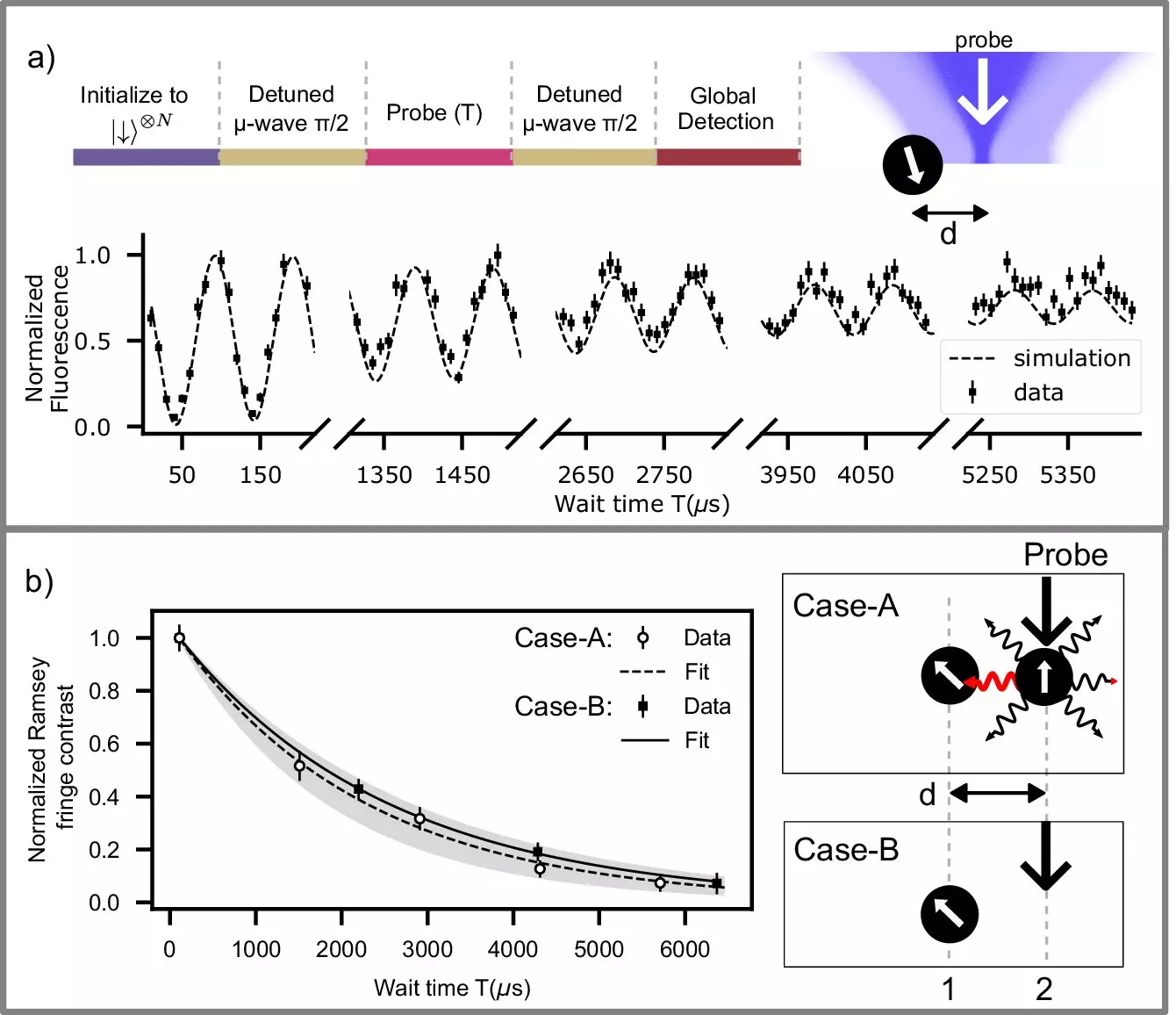In the rapidly advancing domain of quantum computing, safeguarding the integrity of quantum bits—commonly known as qubits—remains a fundamental challenge. As researchers delve deeper into quantum experiments, they frequently encounter the fragile nature of quantum information, which can be easily disrupted by unintended measurements. In particular, recent advancements from a dedicated research group at the University of Waterloo are paving the way for overcoming some of these formidable challenges, particularly in the context of quantum error correction and qubit manipulation.
The Fragility of Quantum Information
The delicate characteristics of quantum states can lead to significant issues in maintaining information integrity during operations. Qubits are particularly susceptible to disturbances, especially when measured alongside or in proximity to other qubits. This vulnerability necessitates the implementation of robust strategies to guard against accidental measurements that can destroy quantum states. Current techniques employed to shield atomic qubits often come with trade-offs, including the depletion of coherence time, the requirement for supplementary qubits, and the introduction of various error rates that undermine overall system performance.
In a remarkable study led by Rajibul Islam at the Institute for Quantum Computing, researchers have demonstrated an innovative method to measure and reset a trapped ion qubit while unabashedly preserving the states of neighboring qubits—a feat previously deemed impossible. Operating at a breathtakingly close distance of just a few micrometers, a scale smaller than a human hair, this breakthrough has the potential to enhance quantum processors significantly, streamlining processes such as quantum simulations and facilitating more effective error correction protocols.
The work, published in *Nature Communications*, represents a continuation of the group’s pioneering efforts since 2019. The team had previously trapped ions for quantum simulation purposes, but this latest achievement reflects a step forward from a significant 2021 breakthrough utilizing programmable holographic technology. By harmonizing holographic technology with ion traps, the researchers have successfully manipulated and destroyed specific qubits without compromising the information housed in others.
At the core of this significant advancement lies precise control over laser light. The researchers were confronted with the challenge of assessing qubit states while minimizing interference with nearby ions. During the measurement phase, targeted laser beams excite the chosen qubit, causing it to scatter photons—a process that holds the potential to disrupt adjacent qubits. This scattering risk poses a considerable obstacle, yet the research team employed cutting-edge holographic techniques for light manipulation, managing to achieve over 99.9% fidelity in preserving a designated ion qubit while simultaneously resetting an adjacent qubit. Additionally, they reported preservation fidelity exceeding 99.6% in a detection beam application over a period of 11 microseconds, noted as a shorter measurement duration than demonstrated by other research entities.
Challenging Conventional Perspectives
What sets this achievement apart is not just the successful implementation of a technically intricate operation, but also the philosophical shift it represents for the field. Historically, many experts believed that measuring one qubit would unavoidably disturb its neighbors unless significant physical separation was introduced. By challenging this entrenched mindset, Islam and his team have illuminated a path that prioritizes advanced light control strategies over traditional separation methods.
Islam’s assertion that this endeavor was once deemed “impossible” highlights the need for ongoing innovation in quantum research. The approach suggests that researchers can successfully navigate the nuances of qubit interactions through meticulous control of laser intensity and scattering effects, rather than retreating to cumbersome tactics like segregating qubits mounted hundreds of microns apart.
The ramifications of these findings extend far beyond immediate experimental success. As quantum computing continues to evolve, the ability to carry out mid-circuit measurements and adjustments with minimal disturbance to other qubits stands as a crucial turning point. This research not only enhances the viability of current quantum systems but also serves as a catalyst for future innovations—where combining techniques for error reduction may play a pivotal role in advancing the next generation of quantum processors.
The University of Waterloo’s groundbreaking work underscores the potential for new methodologies that can effectively protect qubits without needing to regress to earlier, less efficient practices. As the stakes for quantum information continue to rise, the implications of such research resonate throughout the scientific community, heralding a new era of controlled quantum operations with improved stability and precision.


Leave a Reply